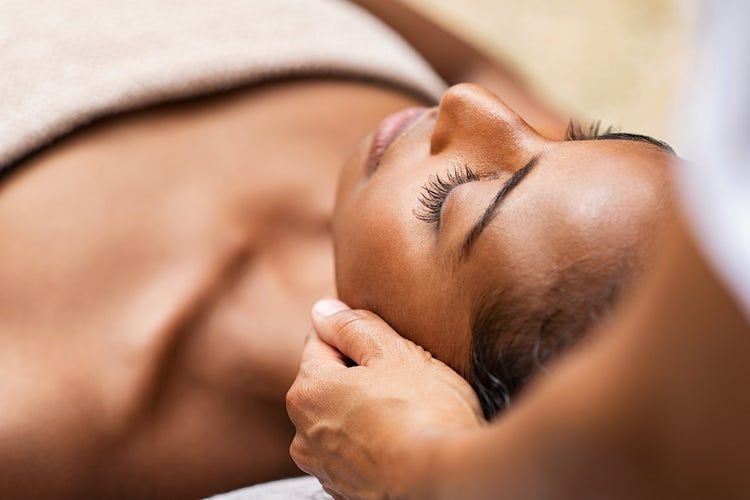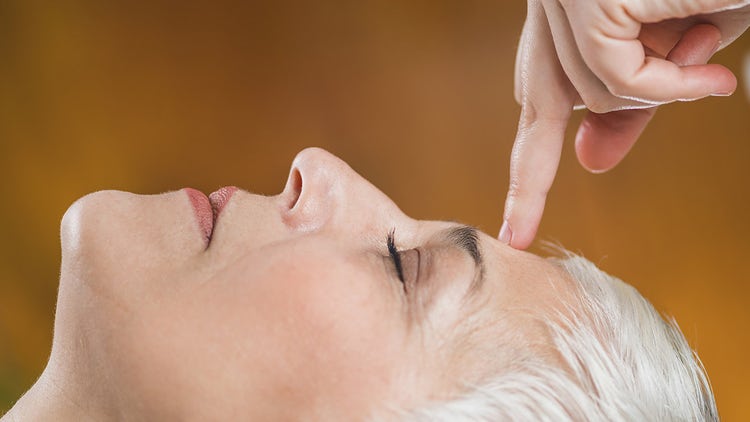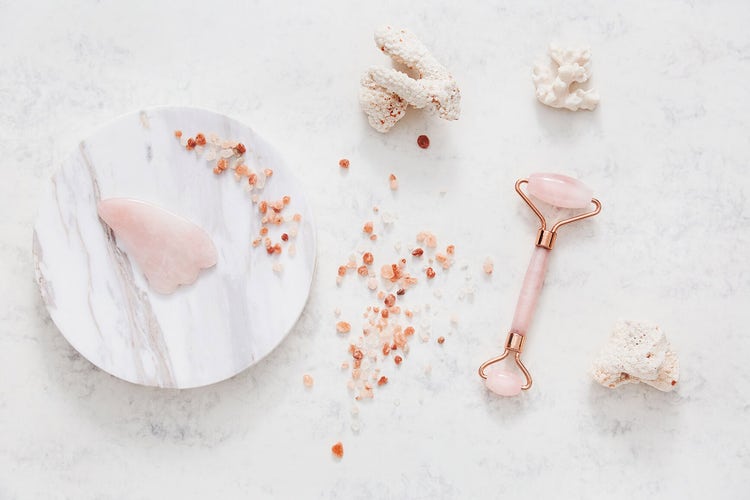Slow Down, Beauty

There is a small segment of the beauty industry that focuses on the holistic nature of, well, everything and teaches that beauty is not something to be found like some treasure in a bottle. And they provide an alternative perspective to the current cultural standard around aging—which basically says we just shouldn’t do it.
Turns out our obsession with products, which fuels the $532 billion industry, might be detrimental to our health, our wallets and the planet—some of those chemicals that have been found to be harmful to our health are, not surprisingly, bad for the environment, too.
Over the past decade, the clean beauty movement has been critically looking at the unhealthy yuckiness in the products we put on our skin and creating ones that eliminate or greatly diminish them, as well as driving research, market and even legislation. Clean beauty has made terrific strides, and as a result, you can find clean options even in places like Target and Walmart around the country. Bravo!
Perhaps the next step is something called slow beauty, which takes the power out of the hands of beauty industrialists and places it firmly back with the individual and small manufacturers that focus on organic and small-batch production—good for the planet and good for your face. Slow beauty is the perfect counterbalance to our fast-paced culture and our obsession with youth, and though it wouldn’t like to be considered so, it’s probably (hopefully, in this writer’s opinion) the next biggest trend.
Facial Acupressure

Based on ancient traditional Chinese medicine principles, facial acupressure, much like foot reflexology, aims to remove blockages to qi, or energy, assist the lymph system and remove tension, thereby aiding in self-healing, revealing our best, most vibrant selves.
Yoshie, owner of Facial Therapy New York, practices sorensensistem, which was developed by Lone Sorensen in the late ’80s and has been used to help alleviate a variety of symptoms associated with a wide range of maladies—from multiple sclerosis to hormone imbalance, allergies to migraines, even depression to insomnia and beyond. “Facial reflex therapy is different than any other treatment. It’s very unique because it works on the skin and the emotional state,” Yoshi says. The idea seems to be that simply focusing on the skin alone is not as effective in treating the whole system, emotions included.
While the theories behind traditional Chinese medicine are considered pseudoscience and there is no evidence-based research that shows it to be effective, that doesn’t stop droves of people from enjoying regular treatments like shiatsu, acupuncture and acupressure. And to be fair, research is expensive, and when profit margins are as slim as they are in traditional Chinese medicine, there aren’t many willing to pony up the funds to really find out.
The sorensensistem of acupressure uses gentle palpitations and sliding motions over regions of the face in a rhythmic, disciplined way—almost like a choreographed dance over the surface of the skin, all while deeply stimulating below. The whole process takes about 50 minutes, resulting in deep relaxation throughout the entire body.
Through this process, the parasympathetic nervous system is turned on and the brain enters an alpha state, which is associated with cognition and healing. Science has also shown that brain waves are linked to an increase in creativity and a decrease in depression.The Japanese Cosmo Lifting treatment, popular with celebrity types in Japan, both lifts and stimulates the face all while increasing endorphins and serotonin. You feel excellent, and you look excellent to boot. That’s in fair contrast to most traditional methods of beauty in Western culture, which are often not fun at best and pretty painful at worst. Facial acupressure on the other hand is like an entire day at the spa rolled up into an hour.
Gua sha

“Gua what?”—the repeated question people ask the first, second and maybe even the third time they hear the term. Translating loosely to “scraping wind,” it sounds just like it is spelled and also draws from traditional Chinese medicine. Using often semiprecious stone tools, the practice is intended to stimulate the skin, remove blockages underneath, increase blood flow and drain lymph, thus restoring vitality and health to body, mind and, of course, your face. Tip: Don’t Google the term unless you want to see photos of the hideous marks it makes when used as a therapy on the back. OK, now that you have Googled it, don’t worry. Facial gua sha is much, much gentler and won’t leave any marks at all.
While rubbing the face with pretty but weirdly shaped stones initially may seem like ancient torture rather than ancient medicine, in actuality, it is an incredibly relaxing experience. Each of the different types of stones used to make the tools are related to a different energy and are said to have different healing properties. This gua sha stone by Wildling is made of Bian, known for its anti-aging benefits.
At Studio Britta in SoHo in New York City, owner Britta Plug says this about the benefits of gua sha in HeyMama, where she also gives a quick regimen for home practice: “You can expect clearer, brighter skin due to increased circulation, toning of the facial muscles, deeper penetration of the products used, calming the nerves and reconnecting with your physical body!”
Samantha Story, also of Studio Britta, who combines gua sha with body acupuncture for a fully immersive healing experience, says, “Typically in our culture, beauty treatments address the face but don’t consider what’s going on in the whole body systemically. I often see women who make all the healthiest choices for their bodies but opt for invasive and chemical options when it comes to their faces. Facial acupuncture and gua sha are noninvasive and benefit overall health. My hope is that these holistic options get us back into our bodies, the connection between the two and a more holistic way to care for them.”
Most experts agree that while having regular professional treatments, creating your own home ritual around the stones is key to maintaining results. A daily mindful practice with the stones can enhance their benefits by creating a better relationship between you and your ever-changing face and body. It’s a great way to start and end your day. A morning practice will invigorate your skin and muscles and help eliminate puffiness, while an evening ritual will help unwind your face and body from daily stress and tension. Both help activate deeper absorption of your products.
The striking attribute of both these beauty spaces, and methodologies, is in what they lack— namely pressure. Most spaces of beauty seem to have pressure on tap—telling women all the ways that they can “fix” their flaws and offering solutions to their “issues,” whereas these spaces focus on enjoying the process of beauty, even if it does take more time and attention.
In a culture where for women beauty is a marker of success, and as Jia Tolentino points out in her article in The New Yorker, “The overwhelming trend is toward escalation,” beauty as a thrilling side effect of overall health and well-being is a radical concept.
Beauty is wellness and wellness is beauty. The secret to long-lasting, maintainable beauty is right where it has always been—in our own hands. Take your time.
Video credit: PeopleImages, Getty Images
Photo credit: Rido, Adobe Stock; Microgen, Adobe Stock; Microgen, Adobe Stock